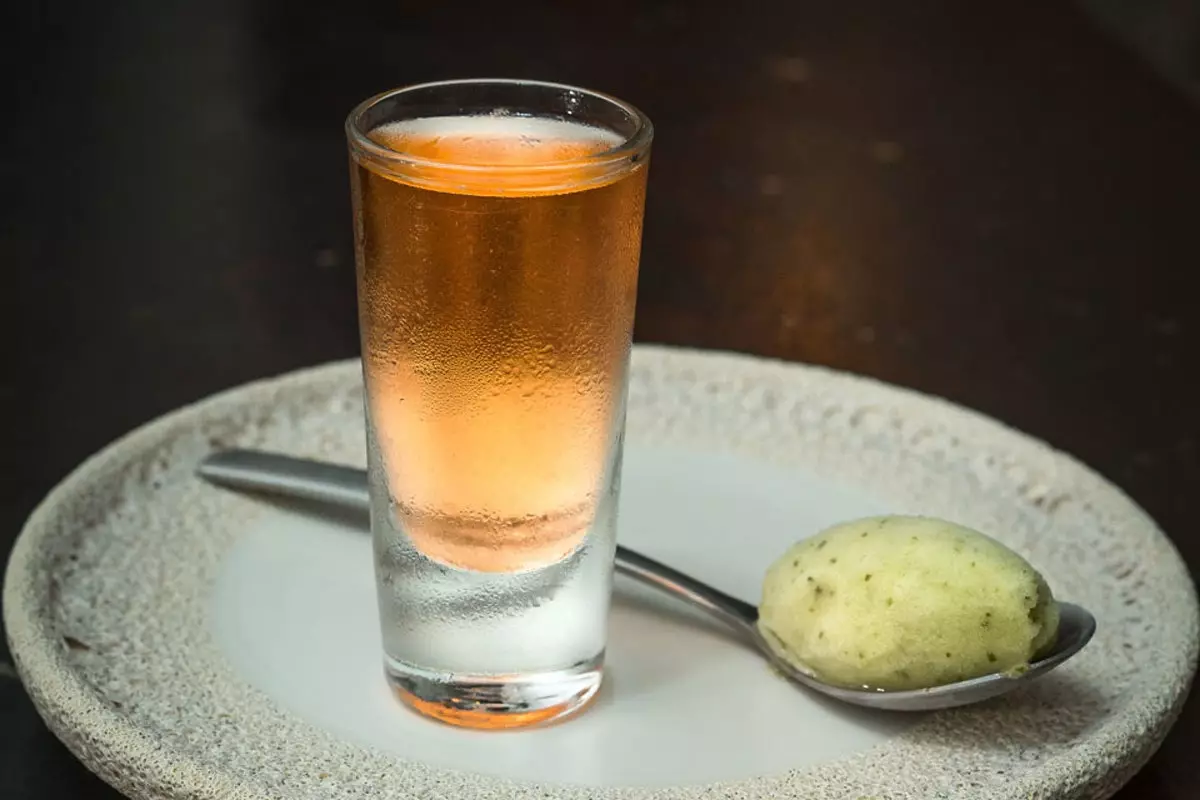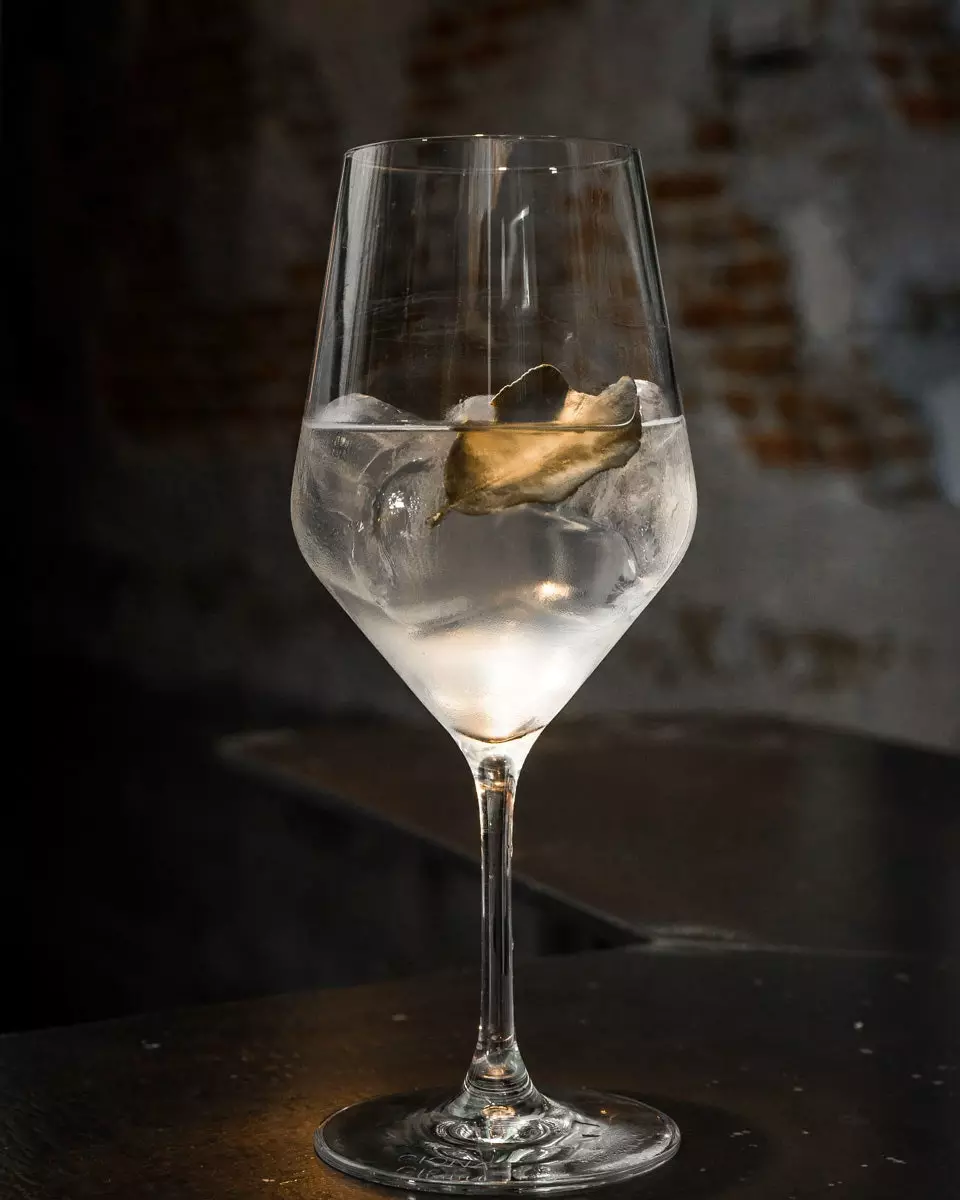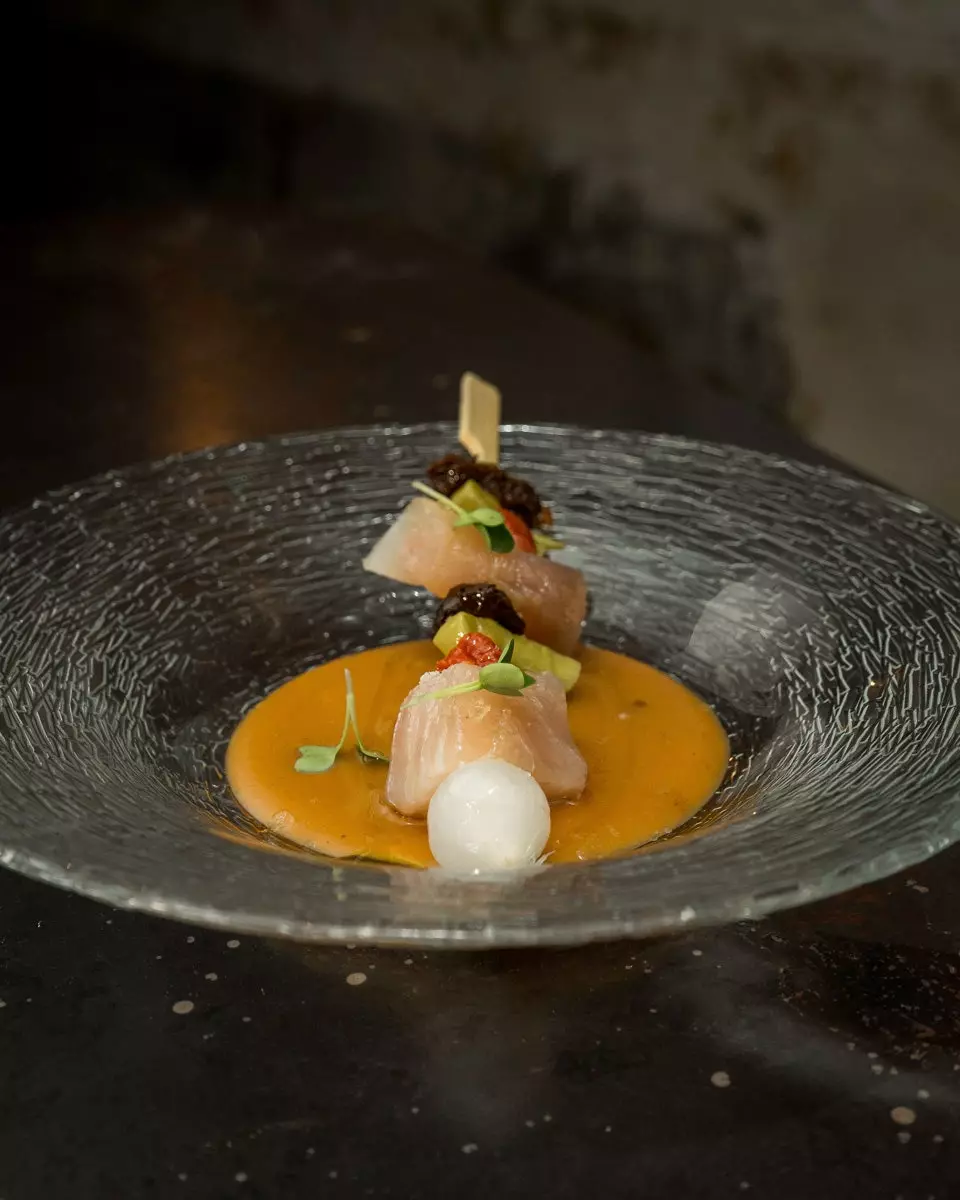
Strawberry, shisho leaf, Astobiza vermouth and celery
the king of appetizers . Vermouth is the mainstay of our Sundays under the sun, the opening of a great meal and why not, it is also the first step to those meals that go on with drinks until late at night. Vermouth goes a long way and in a culture like ours, it is pure tradition. It is normal that the country in which it is made is in Spain Astobiza , the vermouth that has been called the best semi-sweet vermouth in the world.
It has done so in the semi-sweet category and with an Atlantic flavor that marks its bitterness and citrus notes. The base of vermouth is usually white wine, which Astobiza replaces with txakoli which it produces in the same winery with the Hondarribi Zuri grape variety belonging to the Álava Txakoli PDO. Also, instead of sugar, the vermouth is softened with grape-juice and, probably what has earned it points above its competitors –in addition to the citrus fruits from the region it uses and the botanicals from its own vineyards– is that the fortification is done with their own gin.
“Our vermouth recently came to light, in 2020, after many tests that we did from ten to ten liters in demijohns. In the end, we found the formula: with a vermouth of character bitter, fresh, elegant and friendly on the palate”, explains Jon Zubeldia, owner of the winery.
His triumph at the World Vermouth Awards left other brands such as the German Helmut Wermut; the Belgian Spirits by Design Geers Superior Vermouth and the Italians Insolito Vermouth di Treviso and Punt e Mes eager to win the award.
This is not the first time that Astobiza has won an award. And one of the greats. He already did it at the 2020 World Gin Awards with his Geneva (the same that goes in the vermouth). "We wanted to make a distillate that reflected the life of our vineyards," explains Jon. The first thing that occurred to them was a pomace . “But nobody wanted to pick our skin to do it. They offered us to buy it directly in bulk and make our own recipe but we wanted to do it ourselves”.
Coincidences of life, in the ProWine from Dusseldorf , Jon came across a distillery in Vitoria. “They made potato vodka, gins and grain whiskeys... and I invited them to visit us in the cellar to see what we could do together. It was also then when a neighbor from the area told us that around here the Juniper berries they were very common and that juniper was traditional to cure illnesses”, details Zubeldia. With native barley from Álava –and therefore from km 0–, vintage aromas –captured with special machinery– and the lemons that the houses in the area gave them as a barter, the first distillate of it was born.
"Also we add strawberry to the mixture, of the charlotte variety. I discovered it in a greengrocer and its smell fascinated me”. All this results in a floral and fruity aroma , imperceptible in other gins and with a flavor reminiscent of spearmint or mint. “We made it to consume ourselves but friends and even distributors began to ask for it, who asked us for more and more bottles every day. We had no label." They got down to work to remedy it and, thus, presented it at the World Gin Awards, positioning it as the best of Spain in the London Dry style and among the best 20 in the world, competing with 950 other references.

"Estragon" cocktail made with Astobiza vermouth
The vermouth and gin These are just the two branches to which Astobiza has lately dedicated itself in its winery, although since 2009 the wines have been its true roots. "That year we started with a white wine called Señorío de Astobiza, the result of mixing seven plots of the vineyard . It is the representative wine of the variety of native grape, hondarribi zuri . When we are ready to export, it is when we consider changing the brand to Astobiza and making higher value wines, giving life to Malkoa , a wine made from one of those seven plots but left on its own lees".
All this growth of the winery, which now has six references -adding a rosé wine to the white, a red, a sweet wine and, of course, a txakoli, as well as a late harvest made with the izkiriota haundia variety –, was born in 1996 with the impulse of Javier Abando, Jon's father-in-law. "His father had dedicated himself to making a txakoli in Bilbao but he used to take his children to see a nearby vineyard, which filled him with hope." Javier was looking for his own vineyards for ten years and in 1996, he found one hectare that he expanded until he reached seven. "Before, he didn't make wine but he just grew his grapes , already in a sustainable way, to be sold by other wineries. In 2007 he built the winery within the vineyard and that is when he began to produce properly, "continues Zubeldia.
Until 2008, Jon was dedicated to the hospitality industry, managing hotels and catering in Spain and France. His own business led him to settle in La Rioja until he sold it after receiving an offer that he could not refuse. "They offered to buy it from me, maintaining salaries, contracts, everything... that's when I came to manage the winery," he explains.

Gilda de marmitako with tuna from the north cured, one of the Astobiza vermouth pairings
As a good businessman, Zubieta has expanded the brand to distribute his wines in the United States and Japan. But always keeping in mind that what counts is quality. "We cannot grow more because the vineyard is the size it is. In addition, we want give content and story while we internationalize. We are already in 36 countries and we want that now, in addition to getting to know our gin and vermouth, the cocktail bar and gastronomy open their arms to him", confesses Jon.
Having seen the awards obtained, it is most likely that Astobiza will establish the aperitif hour in drinks around the world.
